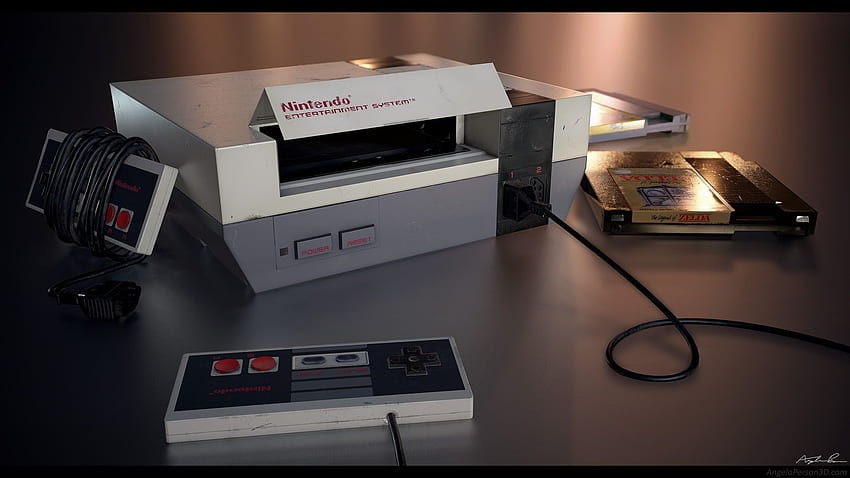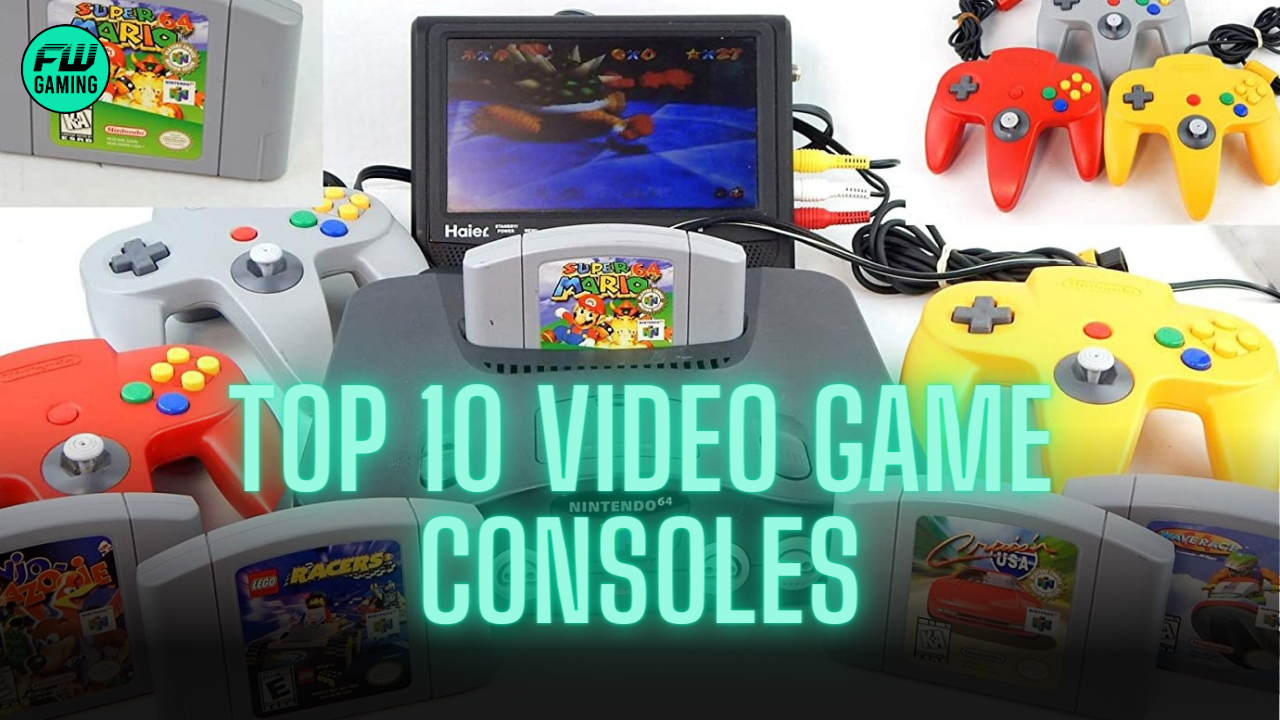Video game consoles have played a pivotal role in shaping the gaming industry and bringing joy to millions of players worldwide. From the early days of simple pixelated graphics to the immersive experiences of today, these consoles have revolutionized the way we play and interact with games. In this article, we will explore the top 10 video game consoles that have left a lasting impact on the gaming landscape. Join us as we delve into the innovations, games, and cultural significance of these remarkable gaming devices. Get ready to embark on a nostalgic journey through the ages of gaming as we celebrate the top 10 video game consoles of all time.
10. PlayStation (PS1)

A groundbreaking and influential console released by Sony in 1994. The PS1 was one of the first consoles to utilize CD-ROMs as its primary game storage medium. This allowed for larger game worlds, higher-quality audio and video, and more immersive experiences compared to its cartridge-based competitors.
The system boasted an extensive library of games, ranging from iconic titles like Final Fantasy VII, Metal Gear Solid and Resident Evil to diverse genres like platformers, RPGs, and racing games. The PS1 achieved remarkable commercial success, selling over 100 million units worldwide. It helped Sony establish itself as a major player in the gaming industry and paved the way for the subsequent PlayStation consoles.
9. Nintendo 64 (N64)

One of the first consoles to offer immersive 3D gaming experiences. It featured a unique analog stick on its controller, allowing for precise and intuitive control in 3D environments. This innovation set a new standard for console gaming controls. The N64 was renowned for its multiplayer capabilities. It introduced four built-in controller ports, encouraging social gaming experiences and enabling friends to play together without the need for additional accessories.
Games like Super Mario 64, GoldenEye 007 and Mario Kart 64 became multiplayer favorites, making the console a hit at parties and gatherings. The N64 had the option to upgrade its RAM with the Expansion Pak, which enhanced the console’s performance and allowed for improved graphics and more complex game worlds.
8. Sega Genesis

Known as the Sega Mega Drive outside of North America, was a highly influential console released by Sega in 1988. The Sega Genesis was the home of Sonic the Hedgehog, a mascot character that became synonymous with the console. Sonic’s fast-paced and action-packed platforming adventures captivated players and provided a rival to Nintendo’s Mario franchise.
The Sega Genesis featured a 16-bit processor, which allowed for more advanced graphics and sound capabilities compared to its 8-bit competitors. The console delivered vibrant and colorful visuals, along with memorable soundtracks that enhanced the gaming experience. Sega heavily marketed the concept of “Blast Processing” with the Genesis, which claimed to provide faster processing speed and superior graphics.
7. Xbox One

Released by Microsoft in 2013, The Xbox One aimed to be more than just a gaming console. It positioned itself as an all-in-one entertainment system by integrating various multimedia features. Users could watch movies, stream content, listen to music, and access apps like Netflix and Hulu, making it a central hub for home entertainment.
The Xbox One had a strong lineup of exclusive game titles, including franchises like Halo, Gears of War, and Forza Motorsport. These games showcased the console’s capabilities and provided compelling experiences that attracted a dedicated fanbase. Microsoft introduced backward compatibility for select Xbox 360 games on the Xbox One, allowing users to play their favorite older titles on the new console.
6. PlayStation 4 (PS4)

The PS4 came equipped with a powerful hardware, including a custom 8-core AMD processor and enhanced graphics capabilities. This allowed for visually stunning games with detailed environments, realistic character models, and smooth gameplay. The PS4 had an extensive and diverse game library, offering a wide range of genres and experiences.
It featured critically acclaimed titles such as God of War (2018), Uncharted 4: A Thief’s End and Marvel’s Spider-Man. Sony released the PS4 Pro, an upgraded version of the console, which offered enhanced performance and 4K resolution capabilities. This allowed for improved graphics and smoother gameplay experiences for those with compatible displays. Sony’s subscription service, PlayStation Plus, offered monthly free games, exclusive discounts, and online multiplayer access.
5. Nintendo Switch

The Nintendo Switch introduced a unique hybrid design, allowing it to be used both as a traditional home console connected to a TV and as a portable handheld device. This flexibility revolutionized gaming on the go, enabling seamless transitions between different play styles. The Switch’s Joy-Con controllers are detachable and can be used individually or together as a traditional gamepad.
They feature motion controls, HD rumble, and an infrared camera, offering new gameplay possibilities and immersive experiences. Nintendo has provided consistent support for the Switch with regular firmware updates, system improvements, and new features. Additionally, the console has seen a steady stream of new games and content, ensuring ongoing engagement and longevity.
4. Xbox 360

The Xbox 360 popularized online gaming and introduced the robust Xbox Live service. It allowed players to compete against each other online, communicate with friends, join multiplayer matches, and download additional content. Xbox Live became a cornerstone of the console, fostering a strong online community and revolutionizing online gaming experiences.
Microsoft introduced the Kinect motion sensor as an accessory for the Xbox 360. It allowed players to control games using their body movements, fostering a new level of interactivity and accessibility. The Kinect also found success beyond gaming, with applications in fitness, entertainment, and education. The Xbox 360 was competitively priced compared to its rivals, making it an attractive option for gamers.
3. PlayStation 2 (PS2)

Released by Sony in 2000, the PS2 was an incredibly influential and successful console that left a lasting impact on the gaming industry. The PS2 featured impressive graphics and technical capabilities for its time. It was the first console to introduce the Emotion Engine, a powerful processor that enabled stunning visuals and realistic gameplay experiences.
The console’s capabilities pushed the boundaries of what was possible in gaming at the time. The PS2 became a cultural phenomenon, with its games and console becoming iconic symbols of the gaming industry. It sold over 155 million units worldwide, making it the best-selling console of all time. Its longevity and widespread popularity cemented its legacy among gamers and industry professionals alike.
2. Super Nintendo Entertainment System (SNES)

The SNES had a rich library of iconic and timeless games that are still beloved today. It introduced franchises like Super Mario World, The Legend of Zelda: A Link to the Past and Super Metroid. These games showcased the console’s capabilities and provided memorable gaming experiences. The SNES offered improved graphics and sound capabilities compared to its predecessor, the NES.
It introduced Mode 7 graphics, which allowed for impressive visual effects like scaling and rotation. The console’s powerful audio chip delivered high-quality music and sound effects, enhancing the overall gaming experience. Many games offered two-player simultaneous gameplay, allowing friends and family to play together. Titles like Street Fighter II and Super Bomberman became popular choices for competitive gaming sessions.
1. Nintendo Entertainment System (NES)

The NES played a crucial role in reviving the gaming industry after the video game crash of 1983. Its success helped restore confidence in the market and brought gaming back into the mainstream. The NES holds a special place in the hearts of many gamers, as it represents a nostalgic era of gaming. Its distinctive gray box design, iconic controller, and memorable games continue to evoke fond memories and inspire retro gaming enthusiasts.
The NES’s success and influence can still be seen in the industry today. It set the foundation for Nintendo’s future consoles and franchises, established the importance of third-party support, and popularized home console gaming worldwide.
Follow us for more entertainment coverage on Facebook, Twitter, Instagram, and YouTube.









